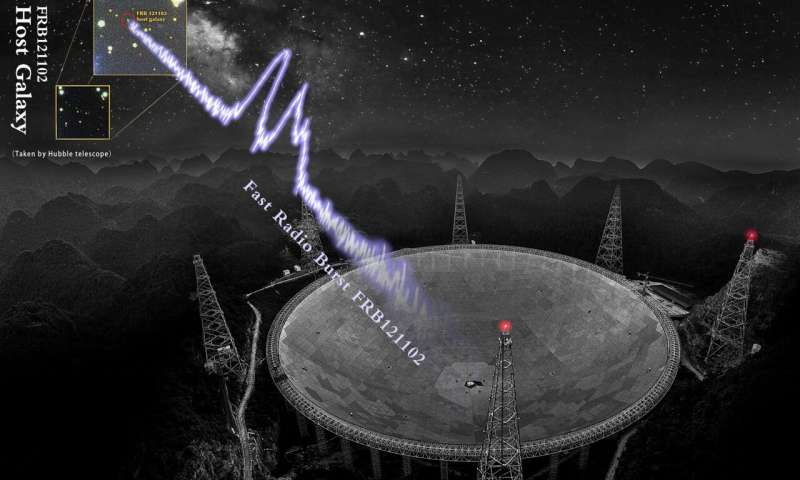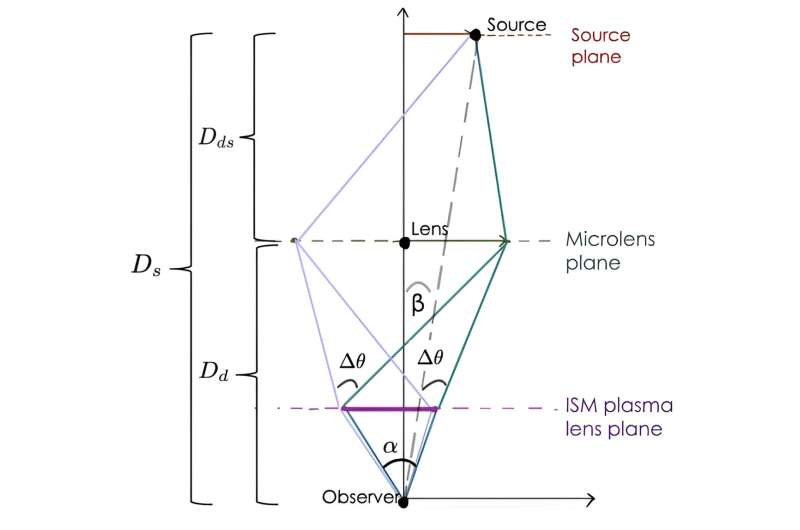This article has been reviewed according to Science X's editorial process and policies. Editors have highlighted the following attributes while ensuring the content's credibility:
fact-checked
trusted source
proofread
Measuring distances in the universe with fast radio bursts

Now and then there is a bright radio flash somewhere in the sky. It can last anywhere from a few milliseconds to a few seconds. They appear somewhat at random, and we still aren't sure what they are. We call them fast radio bursts (FRBs). Right now the leading theory is that they are caused by highly magnetic neutron stars known as magnetars. With observatories such as CHIME we are now able to see lots of them, which could give astronomers a new way to measure the rate of cosmic expansion.
The rate of cosmic expansion is described by the Hubble parameter, which we can measure to within a few percent. Unfortunately, our various methods of measure are now so precise their uncertainties don't overlap. This contradiction in values is known as the Hubble tension. Several re-evaluations of our methods have ruled out systematic error, so astronomers look to new independent ways to measure the Hubble parameter, which is where a new study comes in.
The paper, posted to the arXiv preprint server, looks at using FRBs as a Hubble measure. For light from an FRB to reach us, it needs to travel millions of light-years through the diffuse intergalactic and interstellar medium. This causes the frequency of the light to spread out. The amount of spectral spreading is known as the Dispersion Measure (DM), and the greater the DM the greater the distance. So we know the distance to FRBs. But to measure cosmic expansion, we also need a second distance measure, and here the paper proposes using gravitational lensing.

If the FRB light path passes relatively close to a massive object such as a star, the light can be gravitationally lensed around the object. From the width of the lensing, we have an idea of its relative distance to the FRB source. When the FRB light passes from the intergalactic medium to the more dense interstellar medium of our galaxy, there is a brightening effect known as scintillation, which gives us another distance measure A bit of geometry then allows us to calculate the Hubble parameter.
Based on their calculations, the authors estimate that a single lensed FRB observation would allow them to pin down the Hubble parameter to within 6% accuracy. With 30 or more events, they should be able to increase their precision to a fraction of a percent uncertainty. This would put it on par with other methods. This should be achievable given current and planned FRB telescopes.
New observation methods such as this are the only way we are going to resolve the Hubble tension. Hopefully, we will solve this mystery, and perhaps it will point us to a radically new understanding of cosmic evolution.
More information: Anna Tsai et al, Scintillated microlensing: measuring cosmic distances with fast radio bursts, arXiv (2023). DOI: 10.48550/arxiv.2308.10830
Provided by Universe Today





















